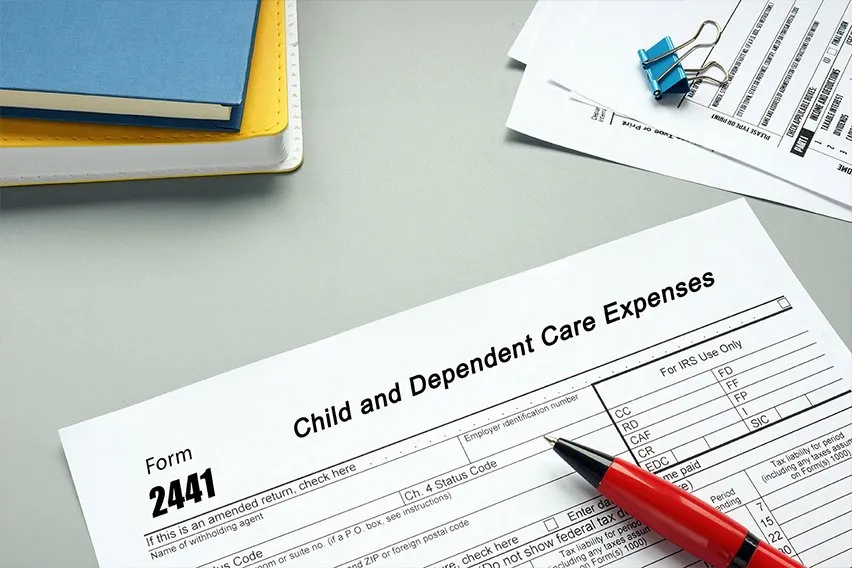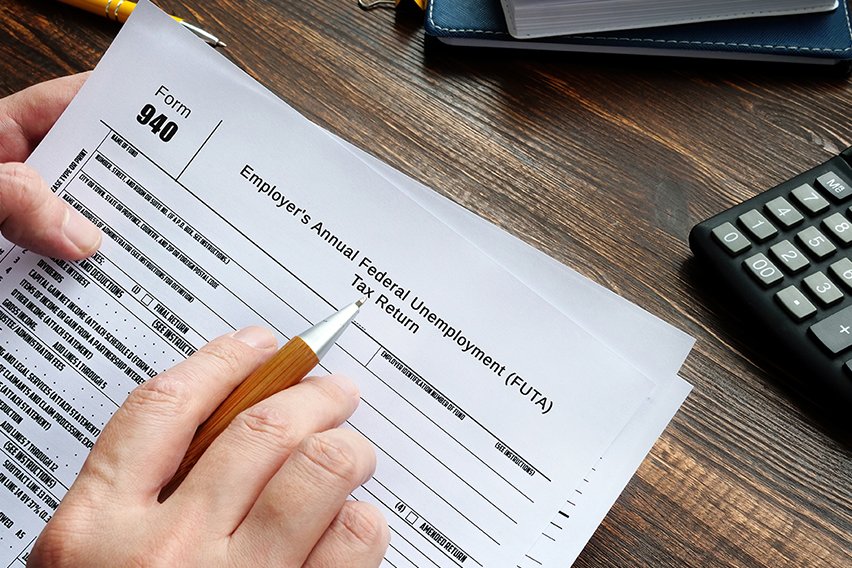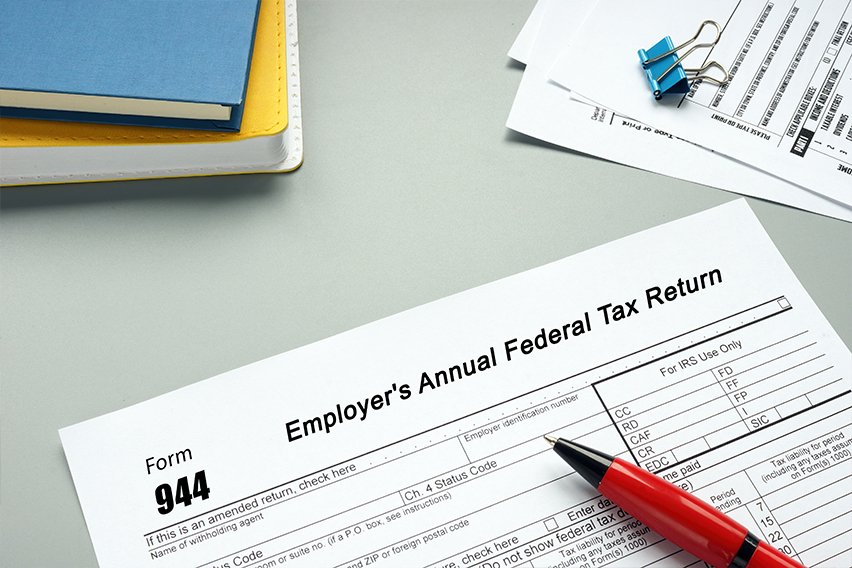What’s a Dependent? Definition & Tax Tips

When it’s time to file taxes, many people search for proven ways to reduce their taxable income. By taking advantage of incentives and tax credits, the average citizen can reduce the amount they owe or increase their tax refund.
Dependency status is one of the ways that taxpayers can claim other individuals on their personal tax return to reduce tax liability. There are, however, a few basic rules for adhering to the dependency guidelines set in place by the Internal Revenue Service (IRS).
In this guide, discover the definition of a qualifying dependent and gain valuable tips for taking advantage of this tax break.
Here’s What We’ll Cover:
Dependents and Taxes–What’s the Relationship?
Necessary Proof of Dependent Status
Definition of a Dependent
A dependent is any qualifying child or person (other than the taxpayer or spouse) that a taxpayer claims on their tax documents in order to secure an exemption for a portion of their taxes. A dependent can also entitle a taxpayer to income-based credits and other tax benefits that are applied when filing taxes.

Who Qualifies as a Dependent
There are several criteria that the IRS uses to determine dependency status. In general, qualifying dependents include:
- Biological children under age 19 (under 24 if full-time students)
- Adopted and foster children
- Qualifying relatives (for whom you provide housing, medical care, etc.)
It is not permissible to claim yourself or your spouse as a dependent for the purpose of receiving a tax break. Moreover, you should always be sure that children and dependent adults meet the IRS criteria before claiming them on official tax documents.
Factors that Contribute to Dependent Status
If you want to take advantage of dependent benefits, it’s important to understand certain categories. Although these qualifications are fairly common sense, the IRS uses these factors to enforce correct use of dependent status.
- Familial relationship
- Age
- Financial dependence
- Provision of care
- Residence
The good news is that many of these categories are extremely broad. For instance, in the familial relationship test, the child must be a son, daughter, stepchild, foster child, brother, sister, half-brother, half-sister, stepbrother, stepsister, adopted child, or offspring of any of the above.
As you can imagine, these relationships include many different children and adults from non-nuclear families. In the end, the option to claim a dependent helps those who provide care and shelter for other individuals.
Are There Dependency Exclusions?
As helpful as dependency status may be, it’s not possible for every individual to claim a dependent. There are some exclusions to keep in mind.
- Someone claimed as a dependent can not claim other dependents. For instance, an adult child cannot be claimed on their parents’ income tax return if that same adult child has their own dependent.
- Divorced parents may not be able to claim children as dependents if the other parent claims the same child. Dependency (for the purpose of taxation) is most often given to the custodial parent. Documentation signed by both parents can legally adjust this status.
- Parents whose adult children are older than 19 years of age (not in full-time school) or older than 24 (if enrolled in college) may not claim them as dependents.
- On joint tax returns, dependent children should only be claimed one time. They cannot be claimed separately by two married spouses.
- For qualifying relatives and adult dependents, there must be substantial care and financial obligation in order to meet federal criteria. Basic care, regular visitation, and a simple relationship are not enough for the purpose of taxes.
- If the dependent has their own income or has annual wages above the threshold set by the IRS, it may not be possible to claim them as a dependent. Instead, they may need to file their own individual tax return.
Dependents and Taxes–What’s the Relationship?
Having dependents is often seen as a positive perk when it comes to taxes. When claiming dependents, transparency and clarity is key–particularly as you file tax paperwork.
Benefits of Claiming Dependents
When you claim dependents on your tax returns, you may be eligible for several advantages.
- Reduction of your taxable income
- Eligibility for more personal allowances
- Substantial monetary savings on taxes
- Eligibility for specific programs and federal tax credits
How to Claim Dependents
There are several places where taxpayers can claim dependents. The documentation for dependents is found on two separate IRS tax forms that most taxpayers complete on a yearly basis.
- Form W-4– This form is the Employee’s Withholding Certificate, and it informs employers how much tax should be withheld per paycheck based on a person’s employment, tax filing, and family status. The form includes space for entering the number of dependents you have and want to claim.
- Form 1040– This form is the standard U.S. Individual Tax Return. Although each year brings a new and updated version of this form, it always includes space for listing the number of dependents. In recent years, the Standard Deduction on this form has been expanded in order to accommodate more dependents.
Dependent Tax Credits
Did you know that in addition to general benefits, there are targeted credits you can claim when filing for dependents? These tax credits include:
- Child Tax Credit (CTC) – Allows parents to claim up to $2,000 per qualifying child. This credit phases out when families earn more than a certain amount a year.
- Additional Child Tax Credit (ACTC) – A refundable amount (up to $1,700) if the CTC reduces a family’s tax liability to $0. Certain qualifications must be met.
- Other Dependent Credit (OTC) – This is a tax credit of up to $500 for non-child dependents who qualify for federal benefits. It is not refundable.
- Earned Income Tax Credit (EITC) – The EITC is geared toward low and middle-income families who need to reduce their tax burden. This benefit increases with additional children.

Necessary Proof of Dependent Status
In some situations, you may be asked or required to provide proof of dependent status. The IRS occasionally selects taxpayers for verification, and tax officials may need to confirm that dependents are eligible for specific tax credit programs.
In these scenarios, you might be asked to provide:
- The dependent’s Social Security Card
- Documentation to prove full-time residence within the United States
- Birth or marriage certificates to prove relationship
- Residency details (including children living with divorced parents)
- Documented financial support of dependents
These details can be found on Form 14815 and are used by the IRS to prove eligible tax credits. Exceptions are made to these requirements if the dependent was born in the United States and has lived within the country full-time.
Tips and Takeaways
If you are eligible to do so, claiming qualifying dependents can result in a potential savings of thousands of dollars on yearly tax returns. Although this savings is extremely beneficial for many families, it’s still important to follow the IRS guidelines and to submit the correct documentation for any qualifying dependent in your care.
Although the IRS has made the dependent process more straightforward than ever before, taxpayers may still have questions and concerns about how to claim and file correctly. When in doubt, always consult the official IRS website on dependent status, and work with a professional tax preparer or qualified CPA who can assist you with both personal and business-related tax questions.
More Personal Tax Resources
- How Much Money Do You Have to Make to Not Pay Taxes?
- Can You Write Off Nanny Expenses? Yes, Here’s How
- What is a W-4 Form?
RELATED ARTICLES

 What Is SUI (State Unemployment Insurance) Tax Rate?
What Is SUI (State Unemployment Insurance) Tax Rate? Small Business Tax Forms: The Complete List
Small Business Tax Forms: The Complete List What is Form 940?
What is Form 940? What Is a 944 Form?
What Is a 944 Form? 7 Best Sales Tax Software For 2025
7 Best Sales Tax Software For 2025 Does Overpaid Tax Get Refunded Automatically?
Does Overpaid Tax Get Refunded Automatically?